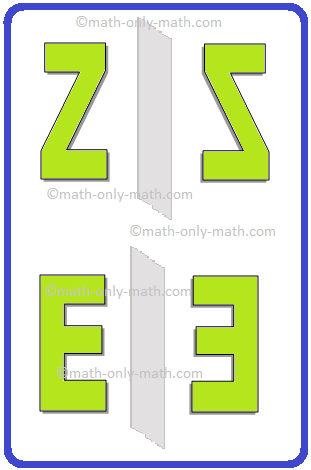

For example, the following shape can be split into two identical halves by a standing straight line.

The line of symmetry can be categorized based on its orientation as:Ī vertical line of symmetry is that line that runs down vertically, divides an image into two identical halves. This line of symmetry is called the axis of symmetry. When a figure is folded in half, along its line of symmetry, both the halves match each other exactly. Here, we have a star and we can fold it into two equal halves. The line of symmetry is a line that divides an object into two identical pieces. Symmetric objects are found all around us in day-to-day life, in art, and in architecture. It is a balanced and proportionate similarity found in two halves of an object, which means one-half is the mirror image of the other half. The definition of Symmetry in Math, states that “symmetry is a mirror image”, i.e., when an image looks identical to the original image after the shape is being turned or flipped, then it is called symmetry. Similarly, a regular pentagon when divided as shown in the image below, has one part symmetrical to the other. The heart carved out is an example of symmetry. For example, when you are told to cut out a ‘heart’ from a piece of paper, you simply fold the paper, draw one-half of the heart at the fold and cut it out to find that the other half exactly matches the first half. Symmetry DefinitionĪ shape is said to be symmetric if it can be divided into two more identical pieces which are placed in an organized way. The imaginary axis or line along which the figure can be folded to obtain the symmetrical halves is called the line of symmetry. In a symmetrical shape, one-half is the mirror image of the other half. A shape or an object has symmetry if it can be divided into two identical pieces.


 0 kommentar(er)
0 kommentar(er)
